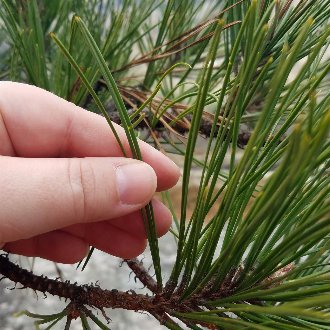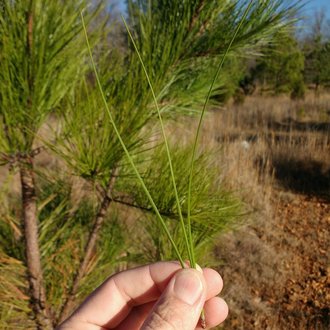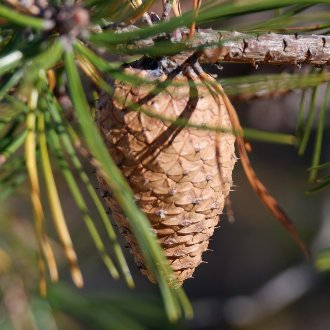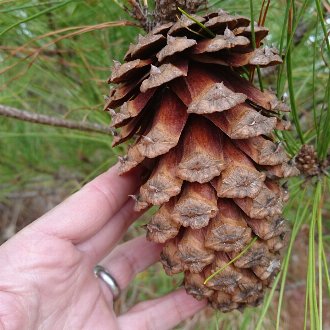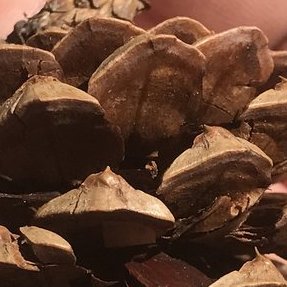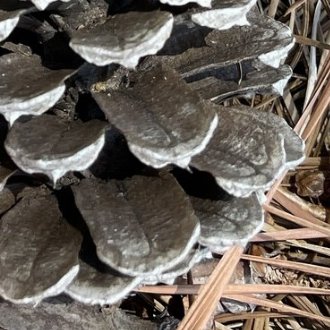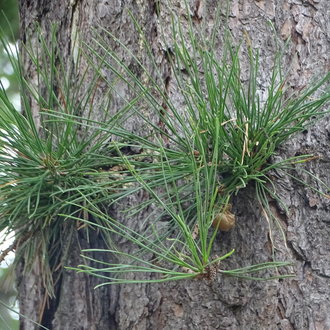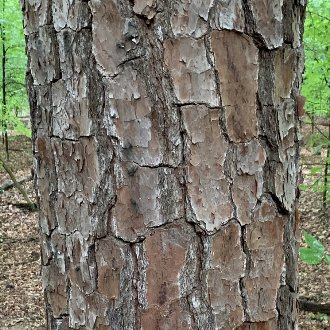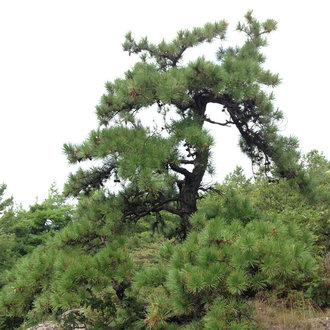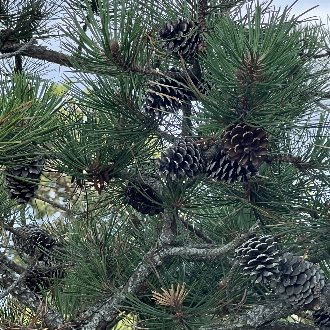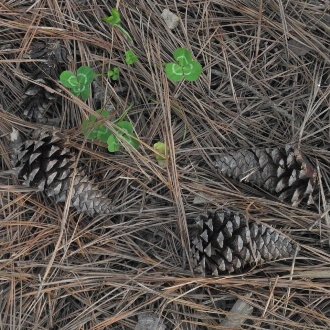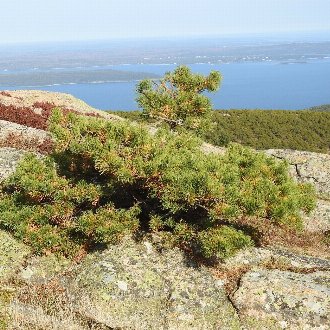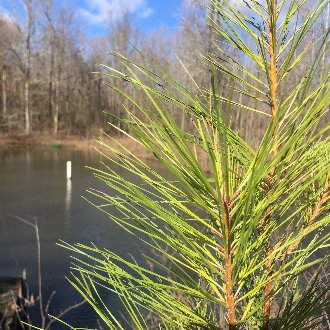Pitch Pine vs Loblolly Pine
These species have only a small range of overlap, but can be easily confused in this region. Both can have yellow-green needles in bundles of three, and both can occur in sandy soil. They are easily distinguished by differences in cones, sprouting, needle length, and form. P. rigida is usually found in dry, barren, fire-prone habitats such as rock outcroppings or excessively-drained sands, whereas P. taeda is most likely on moist, rich sites, and on poorly-drained sites. These two pines can hybridize in the wild, and hybrids are also planted in landscaping, so it may not be possible to identify all individuals.
Pitch Pine (Pinus rigida) | Loblolly Pine (Pinus taeda) |
A scrubby, fire-adapted pine that often grows in harsh conditions, such as dry, acidic, sandy or rocky soil. | A pine native to the southeastern US, favoring moist bottomlands, also widely planted in forestry. |
Shorter needles (5-10cm, rarely to 15cm) Photo © Leila Dasher, CC BY 4.0. | Longer needles (12-18cm, rarely 10-23cm) Photo © Ken-ichi Ueda, CC BY 4.0. |
Cones average slightly shorter (3-9cm) and stouter. Some cones remain closed even when mature, remaining on the tree for years, until opened by fire or prolonged hot, dry weather. Photo © Bonnie Semmling, CC BY 4.0. | Cones average slightly longer (6-12cm) and narrower relative to their length. All cones open at maturity. Photo © Abby Darrah, CC BY 4.0. |
Especially visible on freshly-opened cones, adaxial (top when cone is pointed upward) surfaces of cone scales have a distinct border towards the tip of the scale, often a lighter color than the rest of the surface. Photo © Michael Ellis, CC BY 4.0. | Adaxial surface of cone scales are a solid color, with no border near the tip. Photo © Sam Kieschnick, CC BY 4.0. |
Trees able to resprout. Often sprouts out of the trunk. Photo © Shirley Zundell, CC BY 4.0. | Trees not able to resprout. Never sprouts out of the trunk. Photo © Jeff Clark, CC BY 4.0. |
Trunk may be straight, but more frequently is crooked or gnarled. Photo © Charlie Hohn, CC BY 4.0. | Trunk is nearly always straight. Photo © CK Kelly, CC BY 4.0. |
Open cones are retained on the tree for years. Canopies of mature trees often have many cones in them. Photo © Brooke Smith, CC BY 4.0. | Open cones are only retained on the tree for a short period of time. Canopies of mature trees usually only have recent cone crops. Photo © mjpapay, CC BY 4.0. |
Usually found on very dry, harsh sites, such as rock outcroppings or uplands with very coarse sands, sites where there is usually little competition from other vegetation. Can also be found in bogs where acidity hinders the growth of other plants. Photo © Rachel Stringham, CC BY 4.0. | Found on moister sites, often poorly-drained bottomlands or sites with a high water table, but absent from bogs with highly acidic soil. Sites where loblolly occurs usually have intense competition from other vegetation. Photo © Joseph McPhail, Public Domain. |
References & External Resources
These short lists show only links helpful for ID. For a complete list of references and resources also covering other aspects of ecology, visit the links section of the full article on each plant, which is the first entry here.



